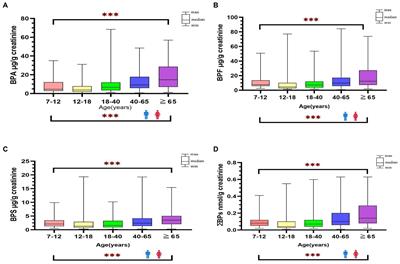Exposure Characteristics and Cumulative Risk Assessment of Bisphenol A and Its Substitutes: The Taiwan Environmental Survey for Toxicants (TEST) 2013
Ever since the use of bisphenol A (BPA) has been restricted, concerns have been raised regarding the use of its substitutes, such as bisphenol S (BPS) and bisphenol F (BPF).

Meanwhile, the EU EFSA issued the new TDI after the latest re-risk assessment for BPA, which enforced the need of cumulative risk assessment in the population. This study was conducted to identify the BPA and its substitute's exposure characteristics of the general Taiwanese population and estimate the cumulative risk of bisphenols exposure. Urine samples (N = 366 [adult, 271; minor, 95]) were collected from individuals who participated in the Taiwan Environmental Survey for Toxicants 2013.
The samples were analyzed for BPA, BPS, and BPF through ultraperformance liquid chromatography-tandem mass spectrometry.Daily intake (DI) levels were calculated for each bisphenol. Hazard quotients (HQs) were calculated with consideration of tolerable DI and a reference dose. Additionally, hazard index (HI; sum of HQs for each bisphenols) values were calculated. Our study found that the median level of BPA was significantly higher in adults (9.63 μg/g creatinine) than in minors (6.63 μg/g creatinine) (p < 0.001).The DI of BPS was higher in female (0.69 ng/kg/day) than male (0.49 ng/kg/day); however, the DIs of BPF and BPS were higher in boys (1.15 and 0.26 ng/kg/day, respectively) than girls (0.57 and 0.20 ng/kg/day, respectively). Most HI values exceeded 1 (99% of the participants) after EFSA re-establish the TDI of BPA. Our study revealed that the exposure profiles and risk of BPA and its substitute in Taiwanese varied by age and sex. Additionally, exposure risks of BPA was unacceptable in Taiwanese by new EFSA's regulation, and food contamination could be the possible exposure source. We suggested the risk for BPA and its substitute's exposure in most of human biomonitoring should be re-assessment based on new scientific evidence.
Read the full article at the original website
References:
